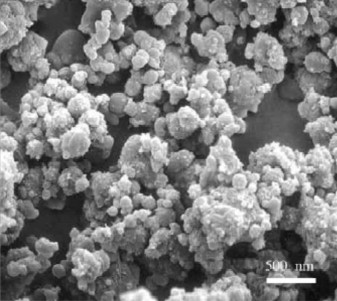Description
The Tiny Titans: Exploring the World of Polymeric Nanoparticles
Nanotechnology has revolutionized numerous fields, from medicine to materials science, and at its heart lies a powerful tool: polymeric nanoparticles. These incredibly small structures, typically ranging from 1 to 1000 nanometers, are made of polymers and offer a unique combination of properties that makes them ideal for a wide array of applications.
What are Polymeric Nanoparticles?
Simply put, polymeric nanoparticles are microscopic particles constructed from polymers. Polymers are large molecules made up of repeating subunits called monomers. The versatility of polymers allows for the creation of nanoparticles with tailored properties, making them adaptable to specific needs. They can be made from both natural (e.g., chitosan, gelatin, albumin) and synthetic (e.g., PLGA, PEG, PCL) polymers.
Why are Polymeric Nanoparticles so Important?
The appeal of polymeric nanoparticles stems from their unique characteristics:
- Biocompatibility and Biodegradability: Many polymers used in nanoparticle synthesis are biocompatible and biodegradable, meaning they are well-tolerated by the body and can break down into non-toxic substances over time. This makes them particularly attractive for biomedical applications.
- Tunability: By selecting different polymers and varying the synthesis methods, researchers can precisely control the size, shape, surface charge, and degradation rate of nanoparticles. This allows for the optimization of their performance for specific tasks.
- Drug Encapsulation and Delivery: Polymeric nanoparticles can encapsulate drugs, proteins, genes, and other therapeutic agents. This allows for targeted delivery to specific cells or tissues, controlled release of the therapeutic payload, and protection of drugs from degradation.
- Surface Modification: The surface of polymeric nanoparticles can be readily modified with various molecules, such as targeting ligands, to enhance their interaction with specific cells or tissues.
Applications of Polymeric Nanoparticles:
The unique characteristics of polymeric nanoparticles have led to a wide range of applications across diverse fields:
- Drug Delivery: This is arguably the most prominent application. Polymeric nanoparticles can improve the bioavailability, efficacy, and safety of drugs by targeting specific sites in the body, reducing side effects, and prolonging drug circulation time. Examples include cancer therapy, gene therapy, and vaccine delivery.
- Medical Imaging: Polymeric nanoparticles loaded with contrast agents can enhance the visibility of tumors and other abnormalities in medical imaging techniques like MRI and CT scans.
- Diagnostics: Nanoparticles can be used as biosensors to detect specific biomarkers in biological samples, enabling early diagnosis of diseases.
- Cosmetics and Personal Care: Polymeric nanoparticles can encapsulate active ingredients in cosmetics, enabling controlled release and enhanced penetration into the skin.
- Food Industry: Nanoparticles can be used to encapsulate and deliver nutrients, improve food texture, and enhance food safety.
- Materials Science: Polymeric nanoparticles can be incorporated into polymers to improve their mechanical strength, thermal stability, and other properties.
Challenges and Future Directions:
Despite their immense potential, some challenges remain in the widespread adoption of polymeric nanoparticles. These include:
- Scale-up and Cost-Effectiveness: Developing efficient and cost-effective methods for large-scale production of nanoparticles is crucial for their commercialization.
- Safety and Toxicity Concerns: Thorough evaluation of the safety and toxicity of nanoparticles is essential before their widespread use, particularly in biomedical applications.
- Regulation: Clear regulatory guidelines are needed to ensure the safe and responsible development and use of nanotechnology.
Looking forward, the future of polymeric nanoparticles is bright. Research is focused on:
- Developing more sophisticated and targeted drug delivery systems.
- Creating “smart” nanoparticles that respond to specific stimuli in the body, such as pH or temperature.
- Utilizing nanoparticles for regenerative medicine applications, such as tissue engineering.
- Exploring new polymers and synthesis methods to create nanoparticles with tailored properties.
Conclusion:
Polymeric nanoparticles are tiny but mighty building blocks with the potential to revolutionize various fields. Their biocompatibility, tunability, and ability to encapsulate and deliver cargo make them incredibly versatile tools. As research and development continue, we can expect to see even more innovative applications of polymeric nanoparticles in the years to come, ultimately leading to advancements in healthcare, materials science, and beyond.









Reviews
There are no reviews yet.